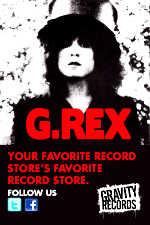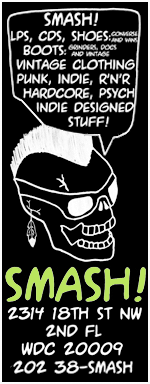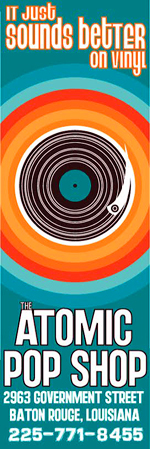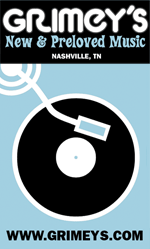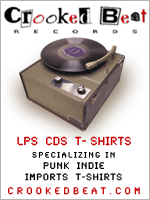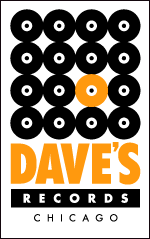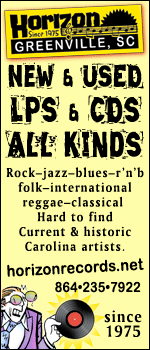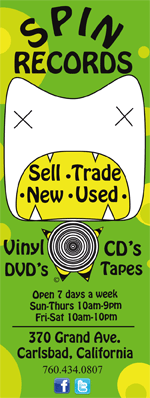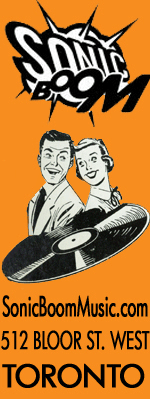
Brash, messy, and super opinionated, Creem magazine came out of Detroit as an edgier alternative to the more staid rock magazines of the ’70s. The first showcase for writers from Dave Marsh to Lester Bangs, it covered the era in a manner that was always entertaining. And the acts they covered seemed to dig it as well.
Gone for more than three decades, its memory was revived in the 2020 documentary Creem: America’s Only Rock ’n’ Roll Magazine. Since then, the entire 224-issue archive of the magazine has been put online, a digital Creem site has been posting new stories, and in September, beyond all expectations, a revived Creem will be back in print for subscribers.
“It never should have gone away,” says John Martin, the former Vice publisher who serves as CEO of the new Creem. “It went away and it was the champion of rock ’n’ roll. Then look what happened. Culturally we got obsessed with the idea that rock ’n’ roll is dead. That’s not true—it’s not true at all.
“That’s the central thesis of why we should bring Creem back,” he says, “because we need to embrace that rock ’n’ roll community that’s been micro-niched and sub-genred to pieces over the last 30 years. We know that Creem is the brand to do that.”
Martin bemoans the state of rock journalism over the past 15 years when “the impish, funny tone of voice has been lost from music writing. It’s felt very academic, it’s felt very stale, and writing to offend no one and give your opinion to the lowest common denominator, broadest group, because that’s how you get the most clicks.
“What Creem invented—really opinionated music journalism—the time was right to bring that back,” he says. “Because when was the last time you had a good time and laughed while you were reading about music? Probably an old issue of Creem.”
Already the online Creem content has caused some waves. A review of an Imagine Dragons record was written without listening to it, for one. And there was a long interview with John Hinckley, who before he turned to a music career, was notorious for firing a gun at Ronald Reagan. “The headlines write themselves on that one, obviously,” he says.
Martin was speaking via Zoom from an office in Brooklyn; JJ Kramer, chairman of the new venture and son of the original Creem co-founder and publisher Barry Kramer, was speaking from Ohio, raising the question whether Detroit will be part of the reboot.
“One thousand percent,” says Kramer. “It’s something we’ve been talking about early and often—creating and maintaining a bridge to Detroit and maintaining boots on the ground in Detroit. We’re already establishing a cohort of contributors and writers that are local to Detroit. We’re going to have a column in each issue of the magazine that’s dedicated to what’s going on in Detroit. Long term, the goal is to have a physical presence there.”
Odd as it may seem, JJ Kramer is a former publisher of the original magazine. “My dad passed away when I was 4-1/2 and he left the magazine to me. So I was chairman of my own rock mag as a toddler, which was really cool to talk about at show and tell.”
He recalls very little about the raucous heyday of the magazine. “I remember being in the offices in Birmingham [Mich.] and being very fascinated by the people walking around, and the music blaring and all that,” he says, adding, “I remember specifically being at one Creem holiday party in Detroit when I was 6 or 7, and there were local celebrities there. I remember meeting Mitch Ryder, I remember meeting Bob Seger, and I remember my mom sending me home very early with the babysitter so the real party could probably commence after that.”
“But other than that, the memories are very fuzzy,” Kramer says. “And by the time when my mom ended up having to sell the magazine in 1985, I was barely 10 years old.” He got the news one summer just after getting back from summer camp. “I sort of paused a second and I said, ‘Mom, if you have to, of course. But I’m going to get it back some day.’”
“Literally, that flame has been burning my entire life. It’s been a challenge putting all Creem’s writers back together, which I’ve spent the better part of my adult life doing, to get to this point, so it’s always been there. It’s been an incredibly long slog to get to the starting line with it.”
The magazine changed hands a bit before it shut down altogether in 1989; a brief revival in the early 1990s as a glossy mag was short-lived and “not part of the canon,” Martin says.

The success of the recent documentary, of which JJ Kramer was a producer, certainly helped the current revival along. “The reception was incredible,” Kramer says. “The affinity people had for the brand was more than just the movie. It was: ‘Where can I get my Boy Howdy T shirt?’ ‘Wouldn’t it be great if you guys put up all the old issues online’ or ‘Oh gosh, do I miss Creem.’”
The magazine surely got the most bang for its buck from the Boy Howdy cartoon by Robert Crumb that quickly became the magazine’s mascot. “As legend goes, my dad wanted to pay him $35 for it but he was convinced by one of the other co-founders, Tony Reay, to pay him $50 for it,” Martin says. “And apparently, my dad was not a fan of it when they got it.”
Crumb’s famous cartoon was on the cover twice—once in black and white and once in color—but won’t be on it when the first revived issue comes out September 15 (they’ve tapped Richard Pettibon for an illustration). The inaugural print edition will also bring back some of the favorite features—Slash will be featured in “Stars’ Cars,” the Creem “Profiles” will be of the Stockholm band Viagra Boys.
Martin, for one, likens the resurgence of Creem with the resurgence of vinyl. “Like vinyl, the whole idea of us going back into print is very much us embracing our analog spirit. So in many ways we’re kindred spirits in that regard.”
















